I’ve been teaching boys and girls to program computers professionally since 1982 when I created one of the world’s first summer camp computing programs. I led professional development at Methodist Ladies’ College in Melbourne, Australia for a few years beginning in 1990. Girls at MLC used their personal laptops to program in LogoWriter across the curriculum. (read about the history of 1:1 computing and programming here). That work led to perhaps as many as 100,000 Australian boys and girls learning to program computers in the early 1990s.
I taught incarcerated kids in a teen prison to program as part of my doctoral research and currently teach programming to PK-8 girls and boys at The Willows Community School
Along the way, I’ve found it easy to engage girls and their teachers in computer programming. Ample access to computers. high expectations, and a competent teacher are the necessary conditions for girls to view themselves as competent programmers. Such confidence and competence unlocks the world of computer science and gaining agency over the machine for learners.
That said, there is plenty of evidence that girls view computer science like kryptonite. Mark Guzdial, Barbara Ericson, and others have done a yeoman job of documenting the dismal rates of female participation in school or higher-ed computer science. This reality is only aggravated by the sexism and misogyny commonplace in high-tech firms and online.
Programming is fun. It’s cool. It’s creative. It may not only lead to a career, but more importantly grants agency over an increasingly complex and technologically sophisticated world. Being able to program allows you to solve problems and answer Seymour Papert’s 47 year-old question, “Does the computer program the child or the child program the computer?”
Add the ubiquity of microcomputers to accessibility of programming languages like Turtle Art, MicroWorlds, Scratch, or Snap! and there is no excuse for every kid to make things “out of code.”
All of that aside, girls in the main just don’t find computer science welcoming, relevant, or personally empowering. Entire conferences, government commissions, volumes of scholarship, and media decry the crisis in girls and S.T.E.M. Inspiring girls to embrace computer science remains the holy grail. But…
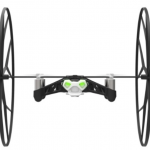
I found the key!
Drones
Girls love to program drones to fly!
Seriously. Drones.
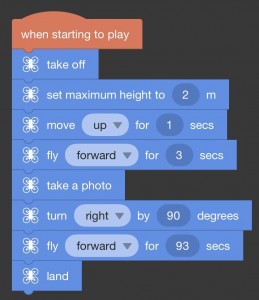
This is an opportunity to reinforce geometric concepts.
I recently purchased an inexpensive small drone, The Parrot Rolling Spider Mini Drone. ($80 US) If flying drones is cool. Programming them to fly is even cooler.
Thanks to a lovely dialect of Scratch called Tickle, you can use an iPad to program a flying machine! Most drones have virtual joystick software for flying the plane in real-time, but programming a flight requires more thought, planning, and inevitable debugging. Programmer error, typos, a breeze, or physical obstacles often result in hilarity.
Earlier this week, I brought my drone and iPad to a workshop Super-Awesome Sylvia and I were leading. Primary and secondary school students from a variety of schools assembled to explore learning-by-making.
Late in the workshop, I unleashed the drone.
Kids were immediately captivated by the drone and wanted to try their hand at programming a flight – especially the girls!
I truly love how such natural play defies so many gender stereotypes. Programming to produce a result, especially control is super cool for kids of all ages. (It’s also worth mentioning that this one of the few “apps” for the iPad that permits actual programming, not just “learning about coding.”)
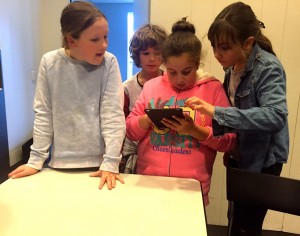
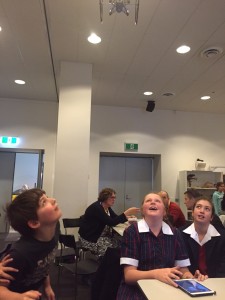
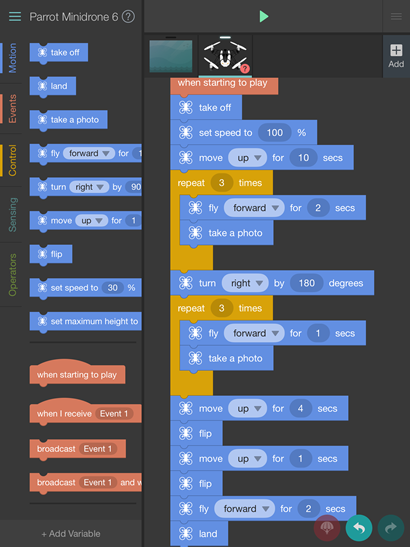
Check out some of the programmable toys and other devices you can control with Tickle!
— — — — — — — — — — — — — — — — -
In addition to being a veteran teacher educator, popular speaker, journalist, author, and publisher, Gary is co-author of the bestselling book called the “bible of the maker movement in schools”, Invent To Learn — Making, Tinkering, and Engineering in the Classroom. He also leads the Constructing Modern Knowledge summer institute and is Publisher at CMK Press.
Veteran educator Gary Stager, Ph.D. is the author of Twenty Things to Do with a Computer – Forward 50, co-author of Invent To Learn — Making, Tinkering, and Engineering in the Classroom, publisher at Constructing Modern Knowledge Press, and the founder of the Constructing Modern Knowledge summer institute. He led professional development in the world’s first 1:1 laptop schools thirty years ago and designed one of the oldest online graduate school programs. Gary is also the curator of The Seymour Papert archives at DailyPapert.com. Learn more about Gary here.
